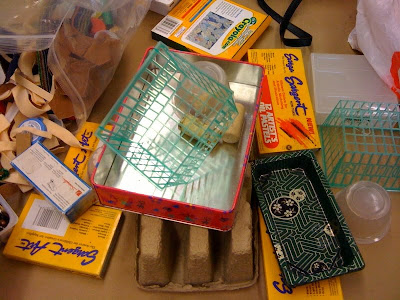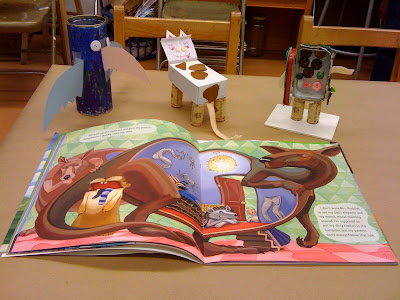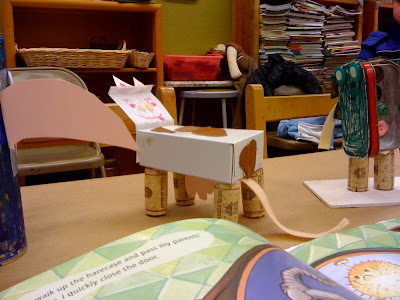This was a two-minute drive from my house yesterday. God, I love L.A.! (Those are the San Gabriel Mountains, by the way).
Viewing: Blog Posts Tagged with: Funtastic, Most Recent at Top [Help]
Results 1 - 5 of 5
Blog: Book, Booker, Bookest (Login to Add to MyJacketFlap)
JacketFlap tags: Funtastic, Add a tag
Blog: Book, Booker, Bookest (Login to Add to MyJacketFlap)
JacketFlap tags: Picture Books, Book Art, Books Are Fun, Funtastic, Add a tag

Are you in a school, a library, or even at home? Are you eager to make your very own "furnimals" based on Nathan Hale's amazing Animal House illustrations? Then look no further than your nearest recycling bin or trash can.
Chances are that you have everything you need to turn the above pile of reusable materials into...
...these adorable and loving literary companions.
The toucan of soda, cowch, and refrigergator were made by 3-5 year olds in Victoria Howard's incredible "Art & Stories" class at Barnsdall Junior Art Center last winter.
Mix a Pringles-like container with some stray buttons, construction paper scraps, and a piece of cardboard, and presto-change-o........you get a toucan of soda.
Shake together some loose buttons, a sheet of styrofoam, an empty soap bar-like box, felt scraps, construction paper pieces, and four corks to get a ....................... brand new cowch!
Don't forget to add the udder underneath. You need some way to be able to milk your cowch.
0 Comments on Green Art Activity: ANIMAL HOUSE Furnimals from Reusable Materials as of 1/1/1900
Blog: Book, Booker, Bookest (Login to Add to MyJacketFlap)
JacketFlap tags: Picture Books, Funtastic, Author/Illustrators, Add a tag

Dr. Seuss's first picture book, And to Think That I Saw It on Mulberry Street, showcases the visual imagination of Marco, the story's protagonist. What follows is a consideration of what Marco might have experienced had he indulged his aural imagination to the same extent.
What if the brass band on Mulberry Street had played Maurice Ravel's Bolero?
Blog: Book, Booker, Bookest (Login to Add to MyJacketFlap)
JacketFlap tags: Picture Books, Books Are Fun, Funtastic, Add a tag

What more can I say? I'm speechless................
Please join the Animal House wordplay antics going on right now at illustrator Nathan Hale's blog.
Visit the "My Books" page on my website to get your very own copy and to read reviews of the book. I'd especially love and appreciate your efforts to support independent bookstores when you support me. Thanks!!
Plus, you can have a chance at winning an autographed copy of Animal House on Goodreads by clicking here. The giveaway will run through the month of August. Good luck!!
Blog: Book, Booker, Bookest (Login to Add to MyJacketFlap)
JacketFlap tags: Funtastic, Writing, Add a tag



CONGRATULATIONS CANDACE!!!! So proud of you and all your hard work and patience for delivering this "baby" is finally here! Can't wait to get a copy for the kids, they'll be so excited!
Thanks so much, Risa!!!! I appreciate the shout-out and can't wait to get you guys a copy!